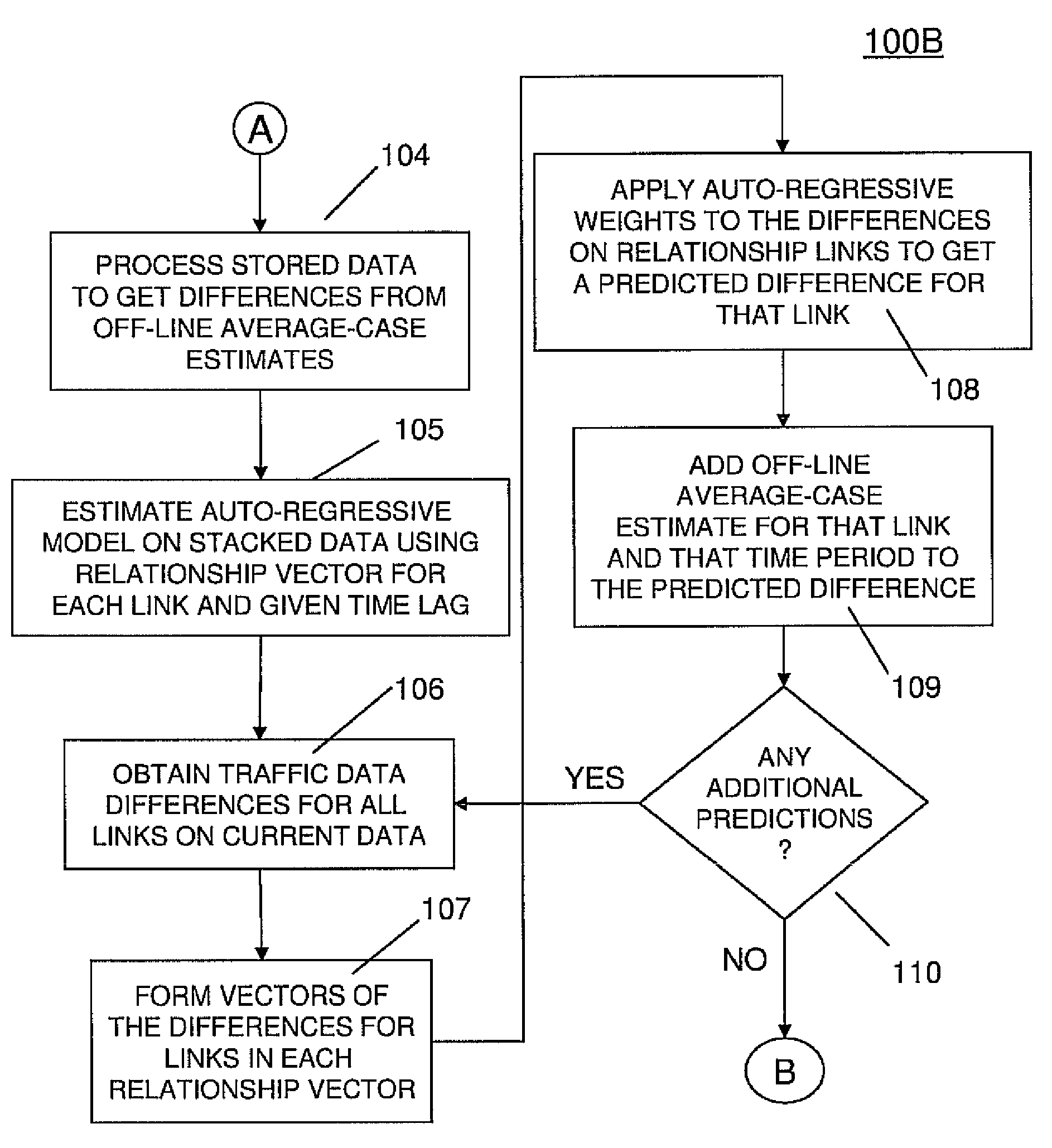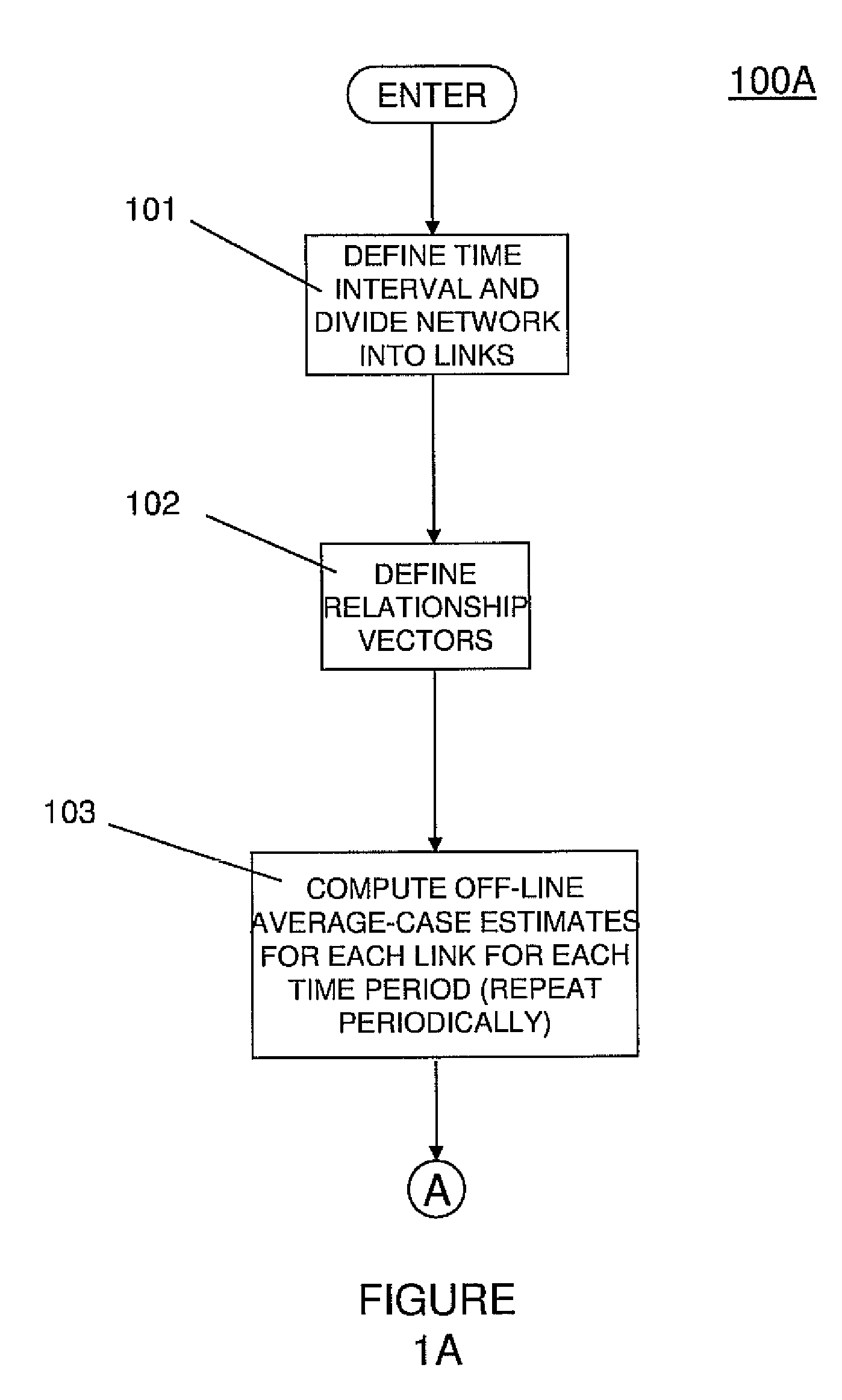Method and structure for vehicular traffic prediction with link interactions and missing real-time data
- Summary
- Abstract
- Description
- Claims
- Application Information
AI Technical Summary
Benefits of technology
Problems solved by technology
Method used
Image
Examples
example 1
[0074]In one preferred practice, the overall structure of the model used in the invention is represented by Y(itr)=m(itr)+x(itr) wherein “r” denotes the template to be used, “i” denotes the link on the transportation network and “t” denotes the time. The templates provide a mean value for the time period of the current (t'th) data, and the “x” represents the deviation from that mean. An embodiment of the invention involves using spatio-temporal autoregressive integrated moving average (ARMA) models to obtain the deviation terms, “x.” One preferred approach is to define the spatial interactions by a set of fixed matrices, whereafter one returns to the easier-to-estimate temporal-only ARMA models. A way to accomplish this is to incorporate average speed information into each spatial interaction matrix, and define one such matrix to represent the case where each preceding time step is predominant.
[0075]For example, in a first such matrix, S1(r), has the values of 1 where flow on a link...
embodiment 1
[0100]one or more traffic signals provide, at more than one point in time, such as repeatedly at regular or irregular intervals, state information on the traffic signal itself. Such state information can include the point in time the signal is at during that instant, how much time is left of that cycle at that instant, and the duration of the cycle. For example, the state information for a traffic light may be that the signal is in the green cycle, there are 10 seconds remaining of the green cycle and the green cycle duration is 30 seconds.
[0101]This information may be updated regularly such as every second, or every 5 seconds, or at irregular intervals.
embodiment 2
[0102]one or more traffic signals provide routing table-type information at more than one point in time, such as repeatedly at regular or irregular intervals. In addition, the traffic signal can also provide state information as described above. For example, routing table-type information can be expressed as the travel times from that signal (or a given location) at a point in time to one or more other locations, typically in the vicinity of that traffic signal. This computed information may take into account the traffic signal state information. The information may be updated regularly such as every second, or every 5 seconds, or at irregular intervals. The information aforesaid can be provided in various ways to the vehicle and other interested parties. E.g. one way is for the traffic signal to publish the information to a web page which can be accessed by an internet-enabled device in the vehicle.
[0103]In addition to the above data on traffic signal state, predictive information ...
PUM
 Login to View More
Login to View More Abstract
Description
Claims
Application Information
 Login to View More
Login to View More - R&D
- Intellectual Property
- Life Sciences
- Materials
- Tech Scout
- Unparalleled Data Quality
- Higher Quality Content
- 60% Fewer Hallucinations
Browse by: Latest US Patents, China's latest patents, Technical Efficacy Thesaurus, Application Domain, Technology Topic, Popular Technical Reports.
© 2025 PatSnap. All rights reserved.Legal|Privacy policy|Modern Slavery Act Transparency Statement|Sitemap|About US| Contact US: help@patsnap.com



